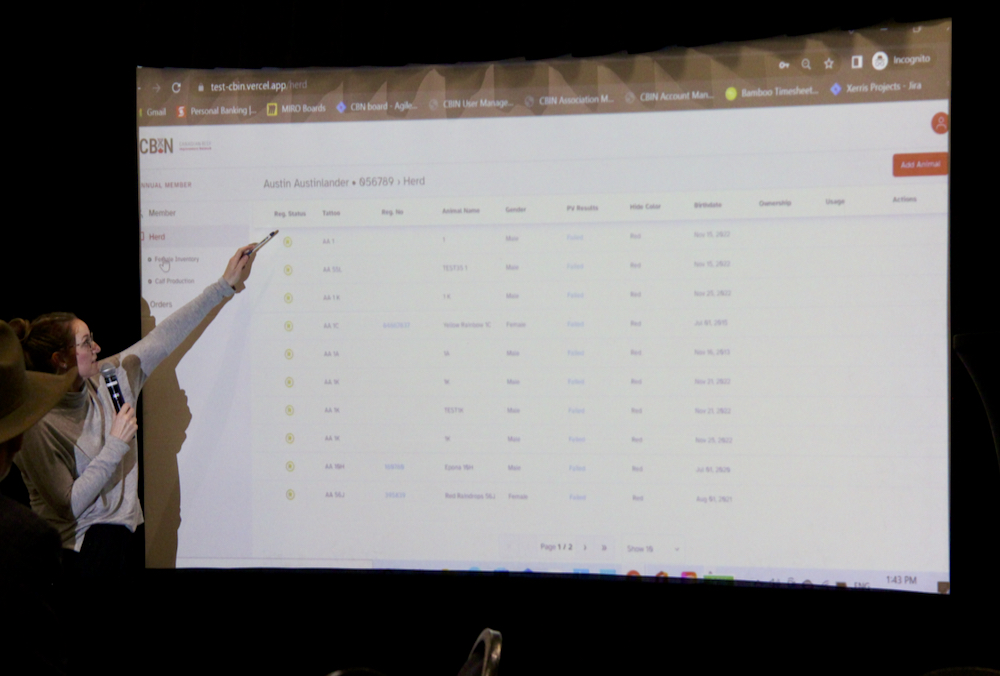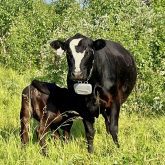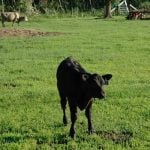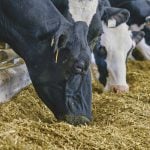It’s Canadian Western Agribition week, and the aroma of mini donuts, hamburgers and smoothies mixes with the more distinct smell of livestock in every room.
In the Queensbury Convention Centre, the crowd noise crowd has dimmed. Members of the breed associations are here for the Canadian Beef Breeds Council annual general meeting, and one of the agenda items is an update on the Canadian Beef Improvement Network and a new platform that promises to make beef cattle genetic data accessible to all sectors.
Canadian Beef Improvement Network
Read Also
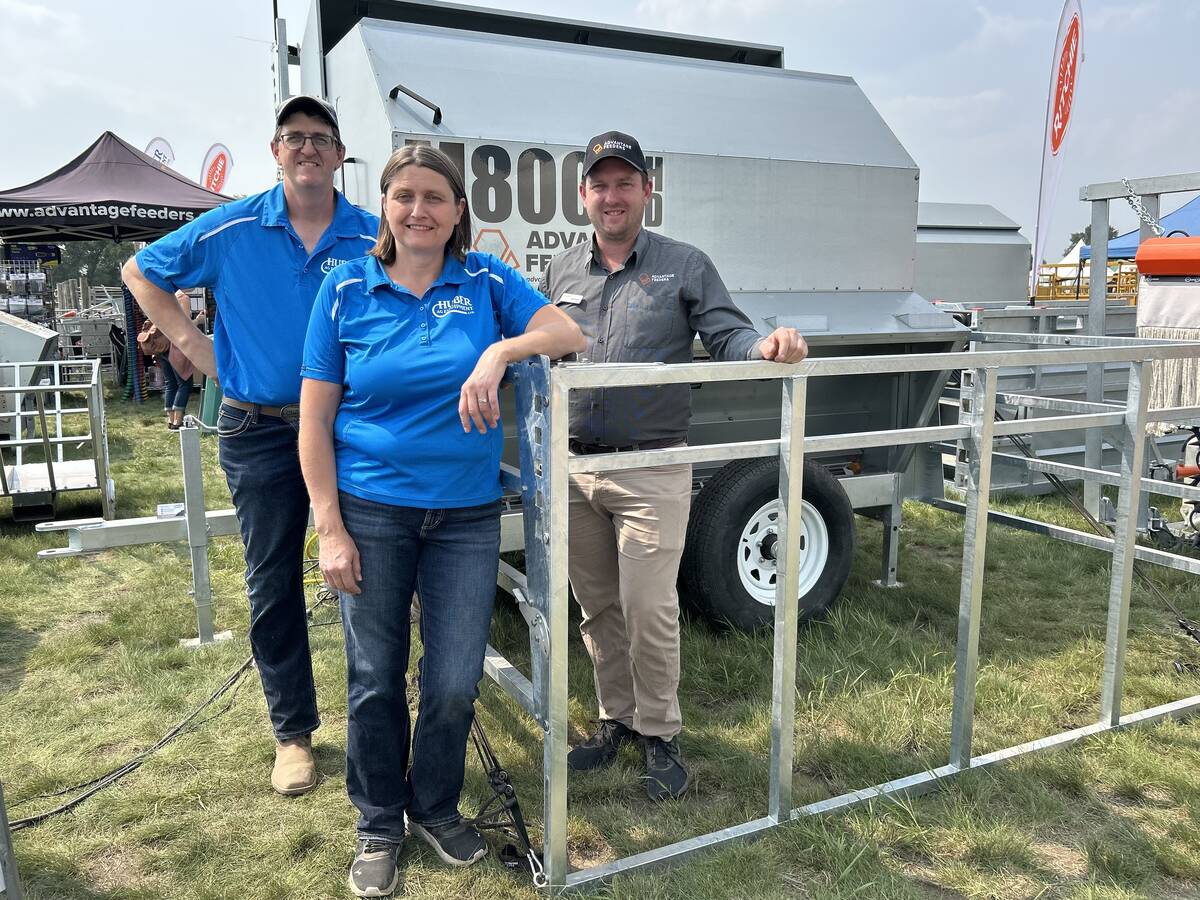
Finding greater value through controlled creep feeding of beef calves
Gerard Roney, founder of Advantage Feeders in Australia, spoke at Ag in Motion 2025 about using controlled creep feeding to develop a calf’s rumen, allowing for better uptake of energy and protein at a younger age, along with other beneficial applications of creep feeding.
According to David Sibbald, president of Canadian Beef Breeds Council, the Canadian Beef Improvement Network is an idea that came to life after 25 years.
“The concept is really the unification of the beef industry, to actually assist all the sectors of the beef industry and create value and share,” Sibbald says.
The network is mainly focused on genetics — specifically, the genetic improvement of the beef herd.
Dr. Stephen Miller is a cattle genomics researcher who previously worked at the University of Guelph but is now located in Australia at Armidale’s Animal Genetics and Breeding Unit, which is a research institute supported by the University of New England and the government of New South Wales. As the keynote speaker at the Canadian Beef Breeds Council’s AGM, Miller talked about the importance of genomics in the cattle industry and rewarding producers for the genetics in their herds.
“I think quite often as breeders in the beef industry, we’re in the push business. We’re basically saying to a buyer, ‘Here’s the information on my bull. This is why it’s good. You should pay more for it because he’s got these figures,’ and that type of thing. What I really think we need to do … is turn it around,” Miller says.
“We need the commercial guy getting rewarded for the genetics he’s got in his calves, and then he’s seeking those genetics.”
He says that if the Canadian Beef Improvement Network can do that, it would be a game changer for the industry.
Previously Sandy Russell, CEO of the Canadian Beef Breeds Council, has said there are four steps the Canadian Beef Improvement Network needs to undertake to move from an idea to an operational network. According to the National Beef Strategy report for 2022-2024, these steps are:
- Building a system to collect and standardize genetic data at the seedstock level.
- Developing a genetic data hub to help link the genetic data to all sectors.
- Create analytical resources and tools to translate the data into value for commercial beef producers.
- Implement a knowledge transfer plan that fosters data incorporation and resource use from conception to consumption.
Currently, the network is at step two of its four-step plan, announcing an application, or “genetic hub,” in the coming weeks.
Genetic hub
The Canadian Beef Breeds Council hired Xerris, a Calgary-based software development company that helps businesses with everything from creating websites to machine learning.
Xerris is creating a tool that people who are part of the breed associations can use to chart genetic data. Lisa Christie with Xerris says the application is like a data portal.
The Canadian Beef Improvement Network “partnered with Xerris to engage with both seasoned staff and primary breed associations to assist in the development of a new data platform,” Christie says.
In an email, Christie writes there are six main areas of the application: herds, animal traits, service exposure, ultrasounds and lab requests, orders, and role-based permission.
The herds section of the application is broken down into grid views, so producers can access specific parts of their herd, such as calves versus females. Animal space is a workspace that includes the entire animal lifecycle or milestones, such as the weight of an animal at birth, weaning, etc. Service exposure allows for documentation between each cow and each bull. The application’s ultrasounds and lab requests section allow producers to request and receive lab tests for parent verification. They will also be able to import ultrasound results.
“All of this rich animal data will be available in both our animal grids as well as our individual animal forms or files,” Christie says.
The orders section includes built-in invoicing, order processing and payment options for both members and staff to view and pay for their order requests, with the ability to view past invoices.
“Each association will have the ability to define their fees for things such as membership fees, performance plan fees, lab requests, ultrasound requests,” Christie says.
Finally, the role-based permissions section of the app is meant for staff only.
Christie says one of the main aspects of the application, which has been in the works for about a year and a half, is that it’s self-serve, easily accessible and user-friendly. They realized at the project’s beginning that both registry staff and members must be able to access the application at any time, she adds.
Benefits
Sibbald says with all that information in the app, there will be a better understanding of the genetics in the member’s herds.
“Seedstock producers, their stake in this game is they get to learn too, and as a seedstock industry, learn to get to provide better genetics back to the cow-calf,” Sibbald says. “And those better genetics actually ended up in feedlots and packers, and eventually on the consumer’s plate for a more consistent, unified experience.”
The app is designed to be very user-friendly. For example, Christie says there is a lot of white space on the application, which makes the application easier to navigate.
“We knew that we needed to ensure that we present a very simple, streamlined workflow that leads the user through their day-to-day tasks. All of the complex magic is hidden behind the scenes,” she says.
Sibbald says it’s important for the application to be user-friendly so that producers use it and keep learning about genetics.
“In the end, this enhances the whole beef industry strategy. And the fact that we actually have data that we can analyze to answer questions — about carbon, about water and about sustainability and biodiversity and all these things that not only governments but consumers are asking us — we can produce validated data to support our story, because the story is good,” he says.
Currently the app targets seedstock producers who register cattle through a Canadian breed association. However the information that will come out of this application will be available to all producers. Russell says ultimately the goal is for commercial cattle producers to derive additional value from the app.
The future
Christie says the application is projected to be done in February 2023. Russell adds that though the app will be done in the first quarter of 2023, they will be doing a final test in February before the associations can use it.
Initially, the app will only be available on a desktop. However, Christie says it will be easy to convert into a phone app and that will follow the desktop app’s launch.
Russell says the network will become even better, but there is more work to be done.
“The tool is there and will be delivered,” she says. “And hopefully is more user-friendly, more readily available and will provide better service to your members. But the true opportunity, and the value back to the entire beef industry, is in stage two.”


